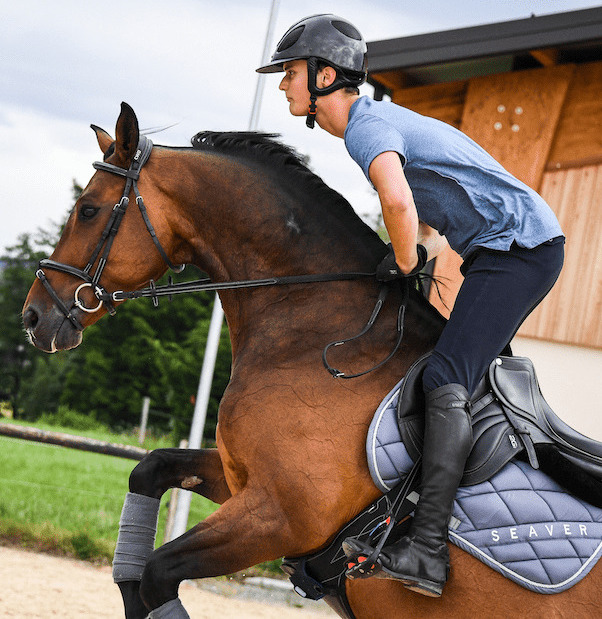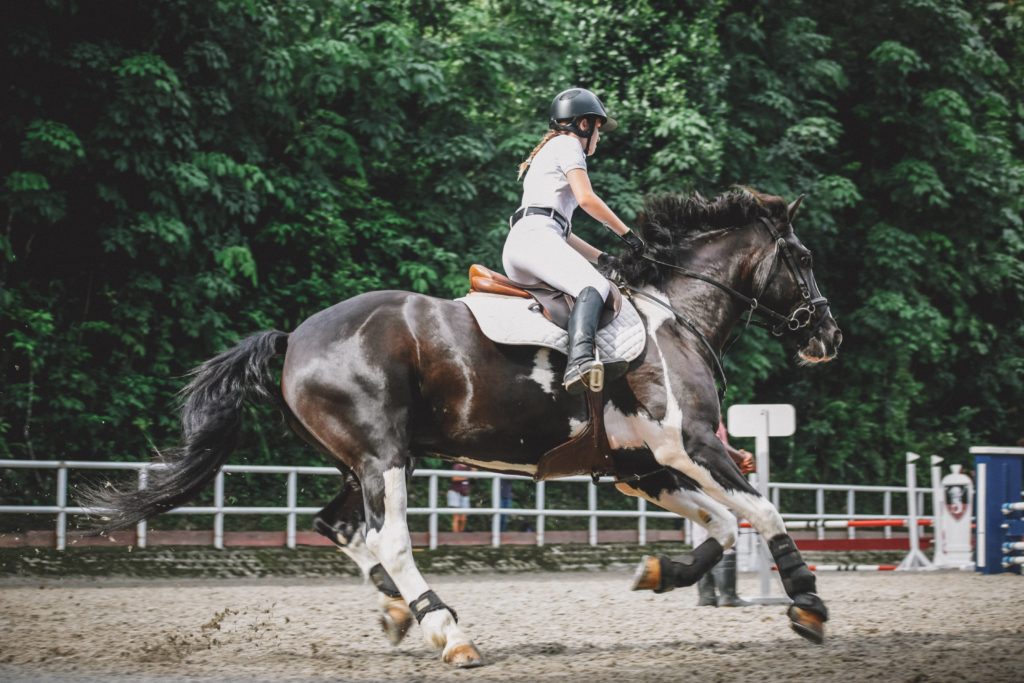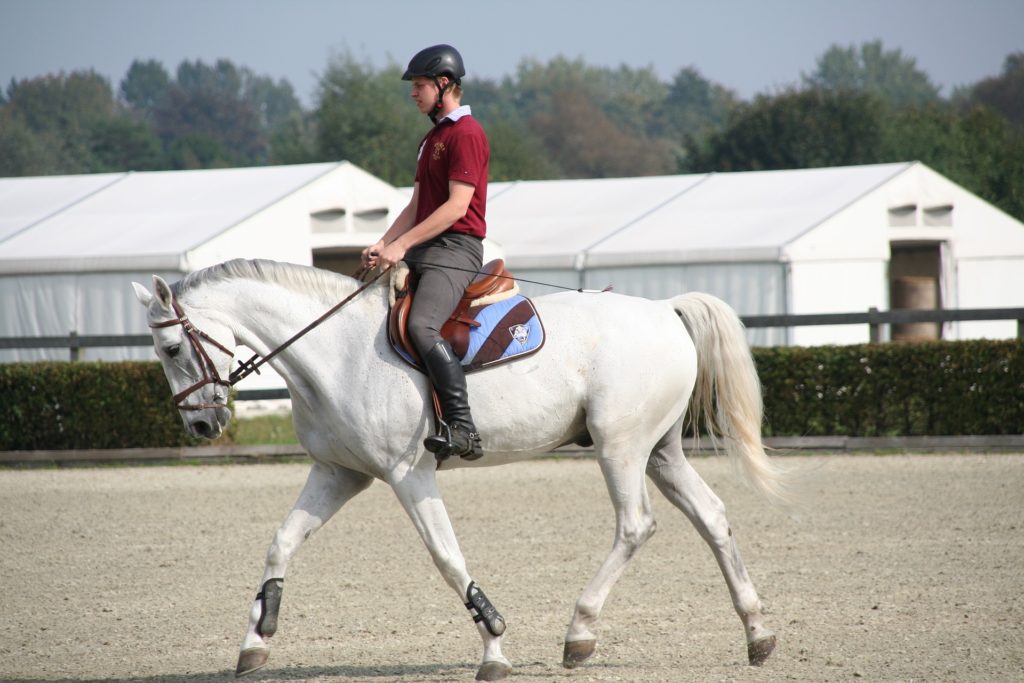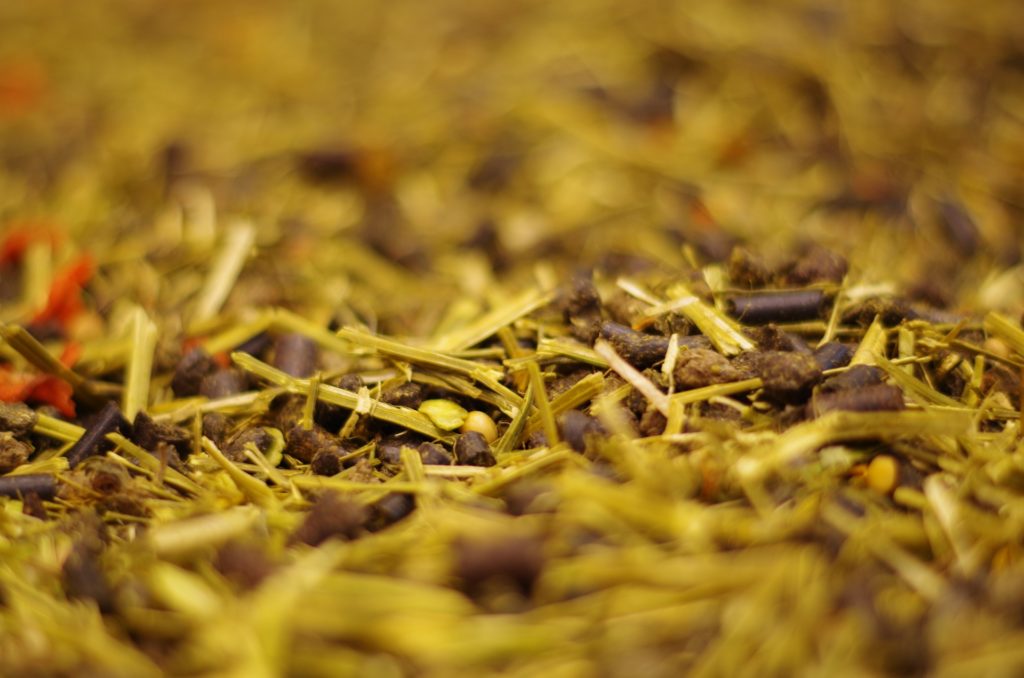-15 % sur votre première commande
rentrez votre email pour recevoir le code


Le paiement x10 disponible sur la boutique ! Commandez votre airbag SAFEFIT pour 50€/mois
vendredi, 4 mai, 2018
Among the training challenges, that of the optimization of recovery after exercise deserves particular attention.
Recovery combines all the processes and strategies set up to allow the horse athlete to regain the integrity of his physical capacities.
The point is to optimize the time required by the organism to regain after a performance a state compatible with the reproduction of an equal performance. Resuming exercise before the recovery of an optimum biological state can lead to a decline in subsequent performances as well as to fatigue accumulation and its associated risks (overtraining, injuries).
The objectives of the different strategies used in recovery depend on the fatigue level induced by the effort provided by the horse, the discipline practiced and the muscle groups used.

After exhausting efforts, physiological and biochemical modifications induced can prove to be significant and lasting requiring appropriate recovery methods. Priorities in such recovery are given to the elimination of the metabolites produced by muscle contraction as well as the restoration of energy reserves and acid-base balance, essential to prepare the energy systems to future efforts.
Active recovery, which consists in realizing a sub-maximal exercise by using the muscular groups that worked during the effort, will help increase blood flow into the muscles during the recovery phase. This increase in blood flow is accompanied by an increase in oxygen consumption (VO2), notably enabling the reuse of some metabolites in the resynthesis of ATP (main energy source).
« In this case, the blood lactate is not an enemy but rather a potential energy source! »
The right balance!
The intensity of recovery should not be too high in order not to further damage the previously solicited muscles. However, it should not be too low either, in order to ensure a certain blood flow. Indeed, maintaining blood flow is a key factor in performance recovery as it helps eliminate muscles metabolites. The right intensity for recovery should be about 70% of the maximum heart rate (HRmax).
To give a concrete example: during a standardized test, my horse’s maximum heart rate is 220bpm. Therefore, in the active recovery phase, my horse should have a heart rate level of about 150 bpm. Below that, he will still eliminate toxins but it will take longer. Above, my horse will consume additional energy substrates and start to partially degrade them, which will thus create toxins. The ideal intensity is thus around 70% of HRmax.
In terms of speed, if my horse reaches his maximum heart rate at a speed of 36 km/h (10 m/s), then the active recovery’s intensity should be about 14 km/h (4 m/s).

Maintaining blow flow in order to eliminate muscles metabolites can also be done locally with low frequency electrostimulation.
This method causes blood flow changes, mainly thanks to local modifications induced by rhythmic muscular contractions, such as improved venous return.
The other advantage of electrostimulation for horses is the solicitation of muscle groups without any additional movement or constraints for their legs.
Although their initial main goal was to increase the range of motion, stretches have progressively been attributed quasi-universal virtues going from their key role of warming-up, to accident prevention, to recovery…
Although it was concluded that stretches done before an effort were most often useless or even harmful to performance, the results regarding their use in recovery differ. Indeed, the important tensions imposed by stretches are the source of additional strain injuries to the internal muscle structure. Stretching the horse after an effort might thus only add more muscle disruptions. Stretches would thus not be recommended for recovery. However, it does also depend on the length and type of stretching (passive, active, stato-dynamic, etc.).
Although very popular, massage has never actually proven its effectiveness. Indeed, several scientific studies suggest that massage is not very effective with regards to both metabolites elimination and muscle strength restoration. However, massages might have a psychological effect mostly linked to hormonal release. Therefore, do not hesitate to massage your horse; it will have a positive action on his well-being!
A second strategy, enabling the optimization of the recovery process, is post-effort nutritional supplementation. Indeed, an effort will induce many physiological modifications such as hydro-electrolytic losses, the degradation of muscles cells with protein losses, a decrease in glycogen reserves, a fall of pH levels, and the mobilization of lipid reserves (following the effort).
The first objective in nutritional recovery is to optimize reserves of water; the organism’s first constituent. It is also advices, in case of high heat and heavy sweating, to compensate the electrolyte losses that go hand in hand with horses’ sweat losses.

Early protein supplementation, given as soon as exercise stops, may also be necessary. The supplements will help compensate for the losses induced by effort and restore the body’s energy substrates reserves, in particular. Indeed, effort induces important disruptions to proteins metabolism, a decrease in protein syntheses and an increase in muscle’s proteins degradation processes. Protein and amino acids supplementation can thus be an efficient solution.
After an exercise, the synthesis of muscle structure’s proteins increases, along with their replenishment. The muscles’ protein synthesis can increase from 100 to 200% in the recovery phase if it is maintained for 3-5 hours for some horses and up to 1-2 days for some others. However, the protein balance tends to stay negative during this period in absence of amino acids supplements.
Therefore, amino acids supplements are all the more efficient when they are given right after the stop of exercise (within 2 hours post-exercise). The supplements’ composition may thus play an important role by influencing the protein balance. It was shown that supplementing essential amino acids could stimulate the protein balance during the recovery phase and thus stimulate the muscle’s protein synthesis.
 |
Dr. Justine Guillaume Ph.D in Equine Nutrition Equine & |
Justine Guillaume has been a horse rider and owners for 20 years. Doctor in nutrition of the athlete horse, she wished to combine the horse’s physiology during efforts, nutrition and performance in order to rationalize and objectify training.
Today, Executive Assistant to the Director and Head of Scientific and Technical Affairs at Pommier Nutrition, producer and distributor of horse supplements, she developed Equine Performance Solutions; a support and coaching aid for the physical preparation of horses.
« Physical preparation is not just massages and care for well-being. It is much more than that! It is above all preparing the body to perform while maintaining the horse’s physical integrity. It is a complementary activity that must help trainers better know their athletes and understand whether their trainings are efficient. »
For her, physical preparation is most importantly evaluating the horse and his physical qualities from effort tests that will enable us to know if the training is indeed efficient, and if the horse is improving or if he is over/under trained…
« The new connected devices now allow us to access a small part of the ‘inside’ of horses; a mine of information! » - Dr. J. Guillaume